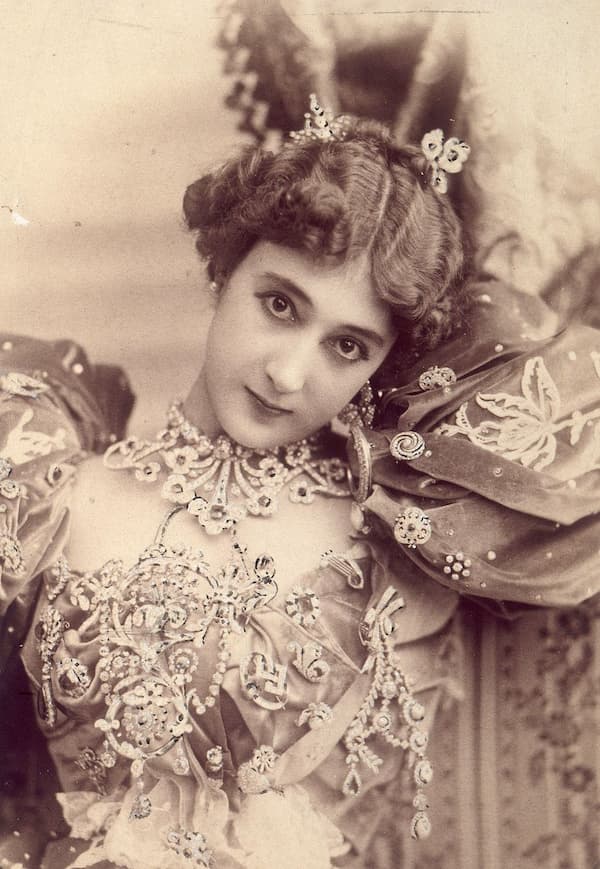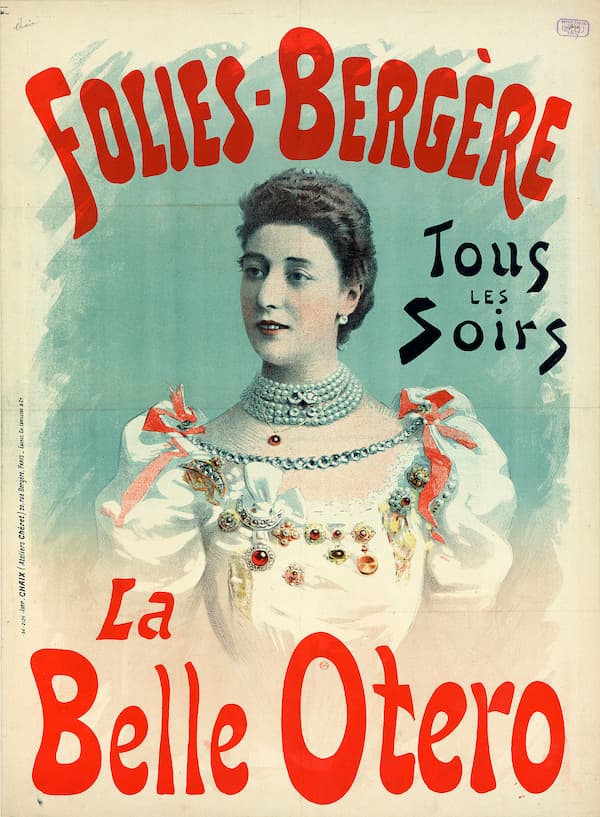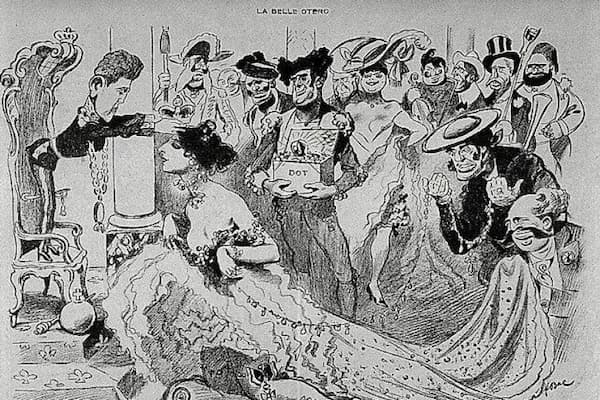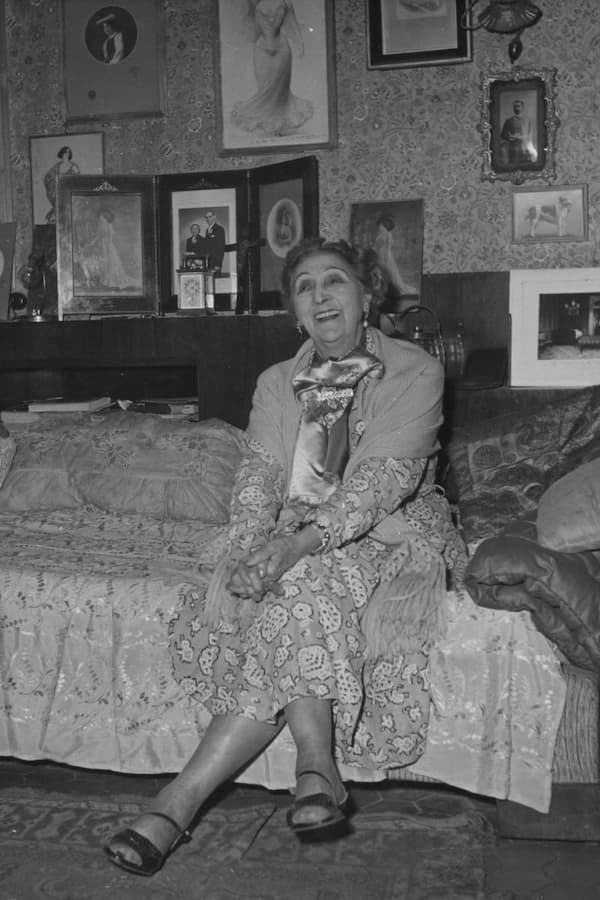She was one of the most beautiful and desirable women of the Belle Epoque. She was romantically linked to Kaiser Wilhelm II, Prince Albert I of Monaco, King Edward VII, King of Serbia, and King Alfonso XIII of Spain, as well as Russian Grand Dukes Peter and Nicholas, the Duke of Westminster and writer Gabriele D’Annunzio. And six men reportedly committed suicide after their love affairs with “La Belle Otero” ended.

La Belle Otero
Her name was Agustina del Carmen Otero Iglesia, but she became better known as Carolina Otero or La Belle Otero. Serving as a courtesan to wealthy and powerful men of the day, she also became a world-renowned dancer. She made a massive fortune over the years but gambled much away by enjoying a lavish lifestyle and visiting the casinos of Monte Carlo. Otero died in abject poverty in a small hotel room in Nice, France.
Carolina Otero Dancing
Carolina Otero was born on 19 December 1868 in Valga, Galicia, in North-western Spain. The illegitimate daughter of an umbrella repairman and a beggar mother, her childhood was characterised by misery and neglect. Supposedly, young Carolina had a cheerful character and was noted for having a fierce and rebellious temperament.
At the age of 10, a horrific act of violence left her scarred for life. She was raped by a labourer, who quickly fled the scene of the crime. The girl was abandoned with grave injuries on the side of the road. She was eventually found and admitted to the Royal Hospital of the Catholic Kings in Santiago, and the medical report confirmed the brutal rape. As a result, Otero was prevented from having children, and she was stigmatised forever.
Ballet Nacional de España: “La Belle Otero”
Carolina Otero left the village at the age of 12, tired of the contempt and rejection from her neighbours and in a desperate attempt to escape poverty. Some reports claim that she joined a Portuguese travelling troupe, others suggest that she went to a convent to become a nun. In the event, Otero started to hang around theatres and show business venues in larger cities, primarily earning her living by prostitution.

La Belle Otero, 1894
At the age of 14, Otero fell in love with a young man called Paco and somehow ended up dancing in a nightclub. The club owner immediately offered her a contract and promised a salary. She was officially discovered by the American businessman Ernest Jurgens, who fell head over heels in love and became her patron. Together they invented a gipsy past for her that told of a supposed marriage at the age of 12 to an Italian aristocrat and her rejection of love for art.
Italian TV-Serie (1984)
After successful appearances in Marseilles, Otero went to Paris for acting lessons so that she could present herself as a professional actress. Her performances at the Folies Bergère became legendary, and her exotic beauty and charisma secured engagements at the Music Hall in New York. A witness reports, “She wore a white satin dress with a plunging neckline lined with ostrich feathers. To show off some of her great legs, the dress was open at the sides. The purity and beauty of her pale face made a lady in the front row sigh.”
“La Belle Otero” started to develop a business model for the elite rich. She would offer her company to men who could afford her, including William K. Vanderbilt. Otero described her recipe for success, “If a gentleman is seen with me, it strengthens his reputation because then he is considered extremely rich.” La Bella Otero turned her love affairs into a fortune in cash and jewels. According to some reports, her jewellery collection included treasures from Queen Marie-Antoinette and the Empresses Joséphine and Eugénie.
Jean Françaix: L’Heure du berger, “La belle Otero” (Guillaume Vincent, piano; Ensemble Ouranos)

Caricature of La Belle Otero
Otero claimed that she only let herself be loved. “I have been a slave to my passions, not to men.” Maurice Chevalier said, “everything came down to sex, only sex.” As an internationally successful Spanish artist, however, she was a muse to writers such as Gabriele D’Annuncio and painters such as Renoir and Toulouse-Lautrec. Supposedly, the domes of the French InterContinental Carlton Hotel in Cannes are inspired by her breasts, as architect Charles Dalmas was obsessed with her.

Carolina Otero, 1950
Carolina Otero retired at the outbreak of World War I, and she decided to retire in Nice. By then, she had already squandered her enormous fortune in the Monte Carlo Casino. Apparently, she always bet on red at the roulette wheel, and “she enjoyed two pleasures, one was winning and the other losing.” Otero once said, “women have one mission in life: to be beautiful. When one gets old, one must learn how to break mirrors.”
For more of the best in classical music, sign up for our E-Newsletter


